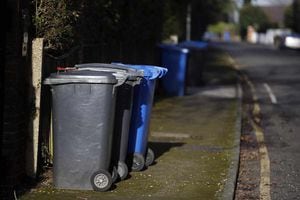Hundreds of tonnes of 'contaminated' rubbish recycled in Shropshire
Hundreds of tonnes of "contaminated" rubbish are rejected from recycling units in Shropshire and Telford each year, figures reveal.

However, the region's statistics show both Shropshire Council and Telford & Wrekin Council have much better rates than some others around the country.
In Shropshire, the council's contamination rate is at three per cent – meaning about 225 tonnes of glass, metal containers and plastic containers were rejected from the county's Veolia Materials Recovery Facility (MRF) in 2015/16.
The "contaminated rubbish" is made up of goods that cannot be put in the recycling, such as certain types of plastic, food waste, textiles or waste that should be recycled like paper but is too dirty or damaged.
In Telford, just over five per cent was rejected from its MRF – some 422 tonnes in 2015/16.
However, national figures show some councils reject up to 20 per cent of its collections, with "contaminated rubbish" up by about 40 per cent over the last five years.
Paul Beard, Shropshire Council's waste contract manager, said:"Unlike the national picture, we have not seen a rise in contamination rates.
"We would obviously like to reduce the three per cent contamination rate figure, and are constantly looking at ways to do this.
"The loaders on the vehicles also play a big part in this.
"Secondly, the contaminants/rejected material from the Materials Recovery Facility we use is not landfilled, but sent to an adjacent Energy Recovery Facility, which generates electricity for the National Grid, in the same way as our ERF at Battlefield."
Councillor Angela McClements, Telford & Wrekin cabinet member for transport, neighbourhood and customer services, said: "The figures in Telford and Wrekin compare very favourably with other parts of the country and they are improving still.
"It demonstrates the enhanced service we are providing and the continued support we get from our residents to recycle, both of which enable us to achieve such good results."
According to the latest national figures from the "Waste Data Flow", the amount of recycling sent to landfill or incinerators went up almost 50,000 tons between 2007/08 and 2011/12 to 180,000 tonnes.
However councils all measure contamination rates differently, and experts say that the total amount of rubbish put in recycling bins that ends up in rubbish dumps could be even higher.
For more information about how to recycle, and what happens to the rubbish, visit www.shropshire.gov.uk or www.telford.gov.uk





